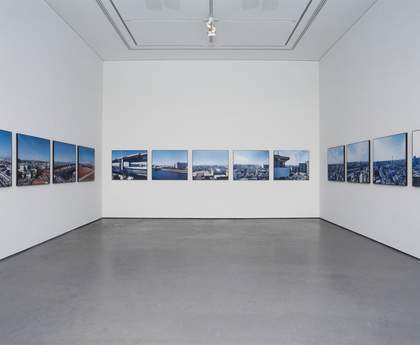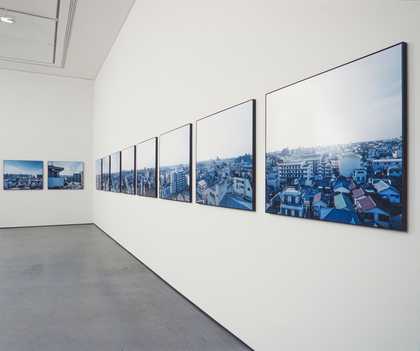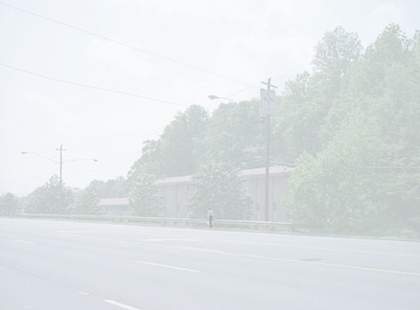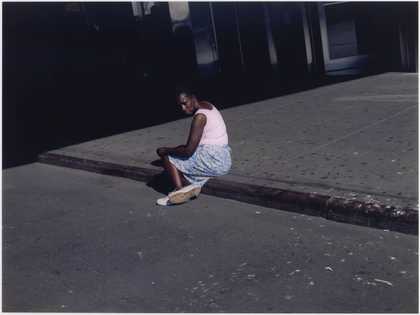Tokyo is a town of unrelenting spread, forever nibbling into the open sky along a ragged horizon line. Paul Graham made Hypermetropia 1995 while working in Japan on a five year project, entitled ‘Empty Heaven’. This larger body of work, more characteristic of Graham’s output, was exhibited and published in the autumn of 1995.
The photographs in Hypermetropia were made in a single day and document a westward progression, rather than a panoramic sweep from one fixed point. Beginning from the top of the artist’s apartment block, in each case a tall building in the middle distance provides the place for taking the next photograph. Details close by remain sharp but impersonal. Landmarks further away take several photographs to reach the foreground, providing markers for the route. Distant Mount Fuji, traditional heart and symbol of the nation, is soon obscured behind a veil of smog, product of the industrialised world in both the East and West. As the photographer proceeds the town recedes, its extent never fully measured by the surveying lens. Sequential shifts in the clouds and shadows show the passing of a day from dawn until dusk, each photograph a slice of time.

Paul Graham, Hypermetropia 1995 © Tate Photography
Urban photographers often select segments of the city to isolate and emphasise the irregularity of street patterns and the randomness of human activity. Paul Graham, however, has articulated his opposition to observing the chaos of urban growth by reflecting this back as multiple fragments of a broken mirror. Rejecting the search for the ‘great’ picture, with its tendency to compress life into neat rectangles, he sees the photographer’s challenge as finding ways of releasing life through the invisible, as well as the visible, power of photography.
With its inherent farsightedness, the photographic medium is always looking to the next horizon. Hypermetropia, the medical description for chronic longsightedness (used as the title) has agreeable coincidences with the subject matter of urban sprawl documented here. An apparently infinite progression over Tokyo offers an alternative view of contemporary social reality. The veracity possible only in this medium is used. But the language of photography’s immaculate surface is augmented to include subtler codes that articulate structures in society and enable photography, in Graham’s words, ‘to reflect on history’. The bullet train rolls by an ancient graveyard. A small enclave of traditional wooden houses or an isolated Shinto temple are hedged in by pre-stressed concrete buildings. A culture of contemplation is transformed into one of consumption. The expansion of towns into surrounding fields is a phenomenon experienced by all industrialising nations, but the time when it occurs and the local conditions give each country its specific character and historical dimension. Like pondskaters, moving across the water’s surface, touching it without breaking it, Paul Graham traverses Tokyo at a magical height, above it but not detached from the city. His sequence shows that no landscape can be neutral. All views are influenced by political realities, shifts in ownership, use and power.
Sean Rainbird, Curator, Modern Collection
Biography
Paul Graham. Born 1956 in England. Lives and works in London.
Programme
The 1996–7 exhibition programme is supported by the Henry Moore Foundation and the Patrons of New Art.



